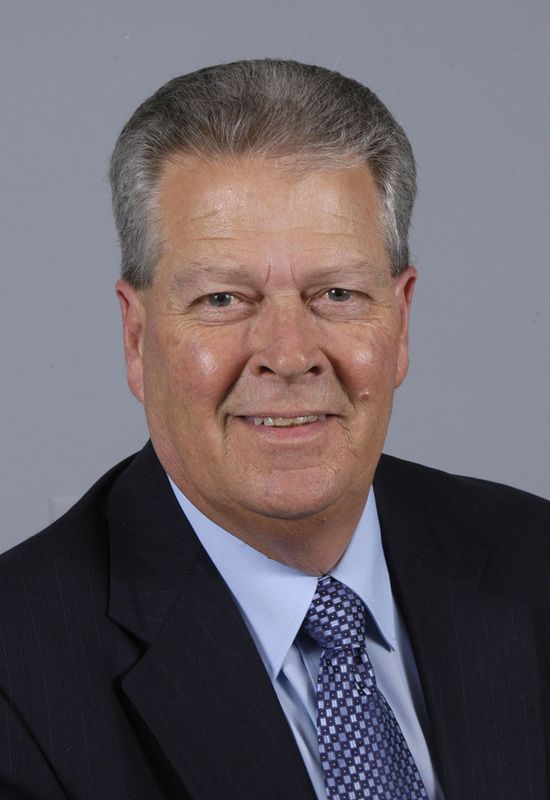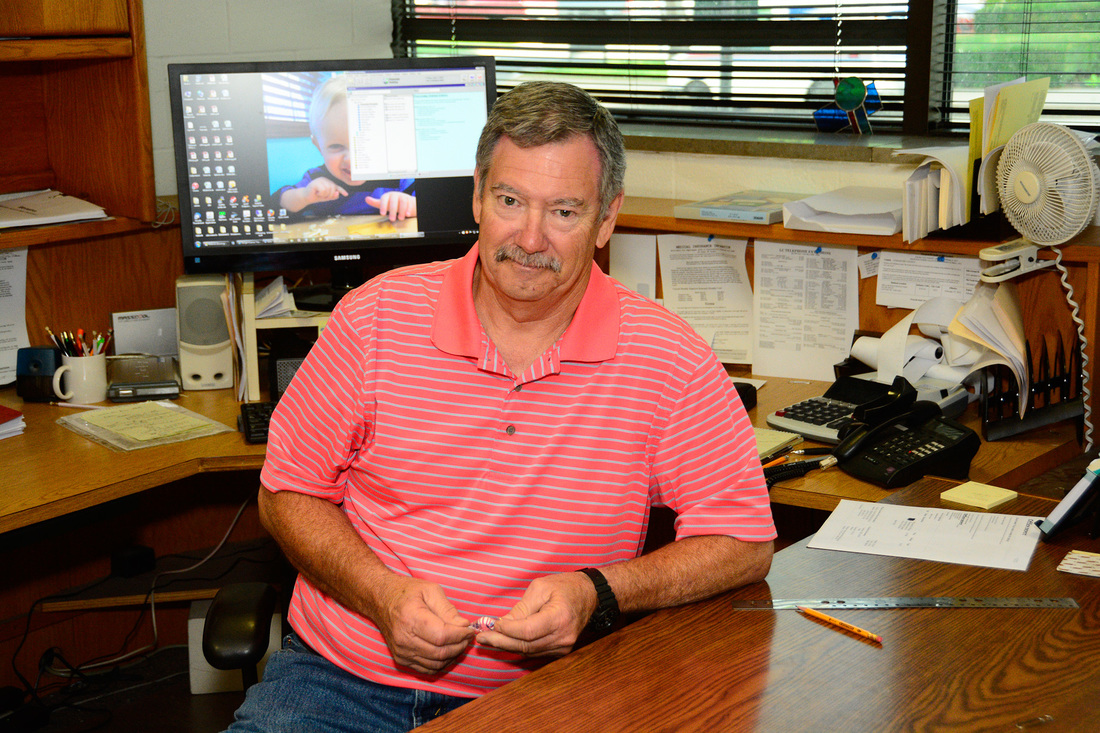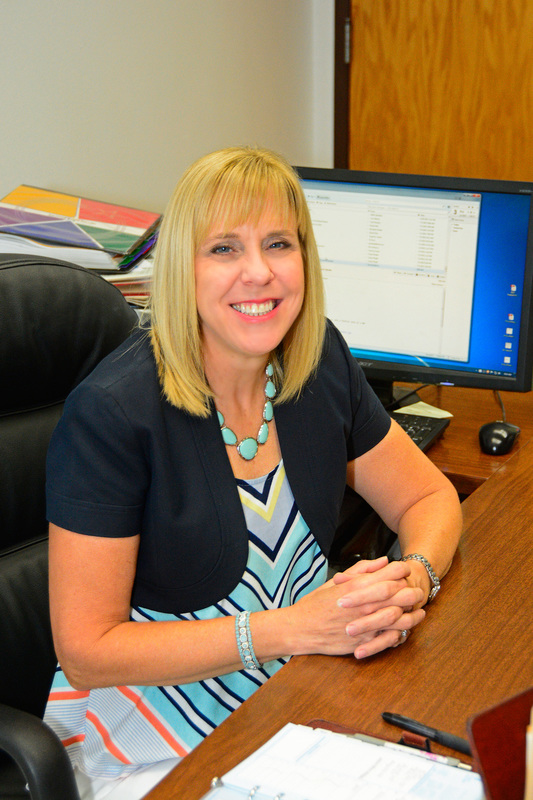SCS Manages Ambitious Rollout At The Lawton (OK) Constitution
A sense of immediacy, universal buy-in and personal involvement: these are some of the shared attributes The Lawton (OK) Constitution management team brought to the table as the daily newspaper embarked with Software Consulting Services (SCS) on an ambitious, six-week timetable to overhaul an antiquated lineup of advertising and accounting systems.
The project managers for SCS credited the expedited rollout and successful go-live to the mentality of the paper’s management team. “There’s only so much we can do with technology,” said Keith Keffer, SCS business systems manager. “We have to have the site want to go forward and push it forward.”
The paper went live in June with what SCS describes as its “Community Advertising System Enterprise Edition Subscription”. The solution is marketed as a monthly service in which SCS provides hardware, software and managed support for an array of advertising-based applications that had traditionally been sold by site license.
Already a customer of SCS’s automated advertising dummying system, Layout-8000™
, The Lawton Constitution added:
The first phase focused on setup, training and implementing the AdMAX, SCS/ClassPag and Layout-8000 products. SCS/Track and CAS were slated to follow later this summer.
“From the first week of training [in late April] to go-live was about six weeks,” Keffer said, “[That] wouldn’t have been possible if the site didn’t have such a good attitude. Everyone involved in the decision-making for purchasing the system was 100% behind it and they made that clear to everyone who worked for them.”
“Not only did they buy into it, but they were very involved,” said Jonathan Ebling, SCS’s pre-press project manager, who participated in the installation and go-live.
For The Constitution, there was an immediacy to implementing a new classified system, in particular. “[The preexisting system] was on life support, and we had to do something in a hurry,” said Mike Owensby, general manager.
The paper was experiencing issues with server stability. “When we were down there for the site survey [in March], I think they rebooted their classified system six times, because it crashed and they couldn’t take ads,” Keffer said. “That was pretty much a daily occurrence for them. I don’t know about you, but if my server was dying that often during the day, I’d be wanting to get off it, too.”
Owensby said the vendor and newspaper agreed on what both considered an aggressive timetable for transitioning.
He acknowledged some initial hand-wringing by front-line users over giving up a system with which they had become “comfortable”, but said doubts were short-lived. “As with any change, everybody was just a little bit apprehensive, but it helped having [the SCS team] around to hold our hands,” Owensby said. “That first day everybody was pulling their hair out. By the third day, everybody [was saying], ‘This isn’t too bad.’ By the fourth day, everybody was just flying through it.”
Kim Dodds, advertising director, observed that the team’s confidence is “building every day.”
In retrospect, it was easier for the management team to be on board from the start, having fretted over the imminent failure of the legacy system. “I mean, there was a couple times when we weren’t sure we were going to get [the paper] out,” Owensby said. “That’s the reason [we] were comfortable with it going in.”
A demo of the vendor’s classified product helped distinguish SCS from the paper’s other prospective choices. “We looked at them and a couple of others,” Owensby said. “It looked like it was a pretty easy system. We didn’t feel like the learning curve would be quite as much as with some of the others. That played a lot into it. It seemed to be something we could implement quickly – and fortunately, that’s the way it’s been.”
It didn’t hurt that the paper was already familiar with SCS as a Layout-8000 customer, Owensby acknowledged.
Streamlining Processes
Aside from swift implementation, another key advantage gained in the transition to SCS’s Community Advertising System, according to Jim Cottingham, The Constitution’s business manager, has been the “elimination of duplication of effort.”
Phil Curtolo, director of sales for SCS, helped the paper justify its investment in the system by demonstrating how it would refine workflow to eliminate a three-part form that was being used to enter redundant data into separate systems.
It’s hard to overstate, Curtolo said, “just how manual the workflow was” and “how many hoops they had to jump through” to schedule, dummy, build and invoice a display ad prior to the conversion. “Their workflow consisted of a hand-filled-out sheet that the sales reps would fill in. They’d pass that around to the different parties – order entry in accounting and production – and then the production folks would grab that sheet and start using that to build the ads. We’ve gotten rid of that sheet for two of those steps. There’s one more step to [eliminate] and then the sheet will go away,” replaced by a single data entry step.
“It streamlined all our processes,” Cottingham said.
Subscription Model and Managed Services
SCS’s shift in focus from selling software site licenses to providing an array of services – software, hardware, support and managed services – via a subscription model was also seen by the Lawton management team as a major plus. “That was a huge part of our decision,” Cottingham said.
“All the servers are theirs; all the software is theirs, and we just pay the monthly service. We also get all the updates,” Owensby said. “They have remote capability if there’s something that’s going haywire. They’re able to go in there and take care of it remotely, which is handy. And also, 24/7 tech support doesn’t hurt.”
“It’s the latest version of the full-function software that we’ve installed for years and years for customers who purchased the site licenses outright,” Curtolo explained. “The difference is that now we’re taking this approach of packaging it together, doing the subscription service and providing the hardware.”
“One of the reasons we’ve had success” with this approach, according to Keffer, is that “we take ownership of a lot of the day-to-day” tasks that an on-site applications specialist would otherwise perform. “We’ve had a few sites where because of staffing issues – where they’ve lost people or had to downsize – they’ve been able to take advantage of us.’’ It costs a lot less for SCS’s managed services, he said, than “having a body on site,” and it’s an added benefit to newspaper customers that “they don’t have to worry about managing all that stuff.”
Likewise, not owning the servers relieves the customer of the prospect of hardware headaches. “We provide on-premise equipment, and it’s as though it’s in the cloud from the customers’ standpoint,” Curtolo said. “They don’t do anything with the on-premise equipment other than unpackage it when it arrives, plug it into their power supply and hook it up to their network. Once it’s on the network, we maintain and monitor it in real time from SCS, going forward. It’s got all of the thumbs-up and benefits of the cloud, without any of the risks having hardware not being on-premise and not being able to access it for some reason.”
The bundling of what used to be stand-alone software products also has had a beneficial impact on the implementation process, according to Curtolo. “We eliminate what was always the wild card when we were installing one system at a time: the interface with third-party systems,” he said. “The more of that we can cut out, the better the installs go and the more control over the installs we end up having.”
The vendor has an installed customer base of 20 newspapers that are utilizing its full suite of advertising products, Curtolo said. This is in addition to the more than 200 that have one or just a few of the modules.
Having become one of them, the management team at The Constitution has expectations that in addition to productivity savings, the newspaper will realize revenue gains from the new upsell features in SCS’s classified product. “We’ve already generated some,” Cottingham said. “I was looking at some reports this morning, and it looks like the boxes and logos are up from what they were.”
Owensby acknowledged that the gains will take time. “It’s a slow process, because everybody’s got to get comfortable with [the new system], but at some point we’re going to get there, and we feel like there’ll be enough additional revenue generated to take care of the monthly cost.”
Published:
13-Jul-2015
The project managers for SCS credited the expedited rollout and successful go-live to the mentality of the paper’s management team. “There’s only so much we can do with technology,” said Keith Keffer, SCS business systems manager. “We have to have the site want to go forward and push it forward.”
The paper went live in June with what SCS describes as its “Community Advertising System Enterprise Edition Subscription”. The solution is marketed as a monthly service in which SCS provides hardware, software and managed support for an array of advertising-based applications that had traditionally been sold by site license.
Already a customer of SCS’s automated advertising dummying system, Layout-8000™
, The Lawton Constitution added:
- AdMAX™, which is SCS’s retail and classified order entry, scheduling, billing and accounts receivable solution;
- SCS/ClassPag™, its classified pagination solution;
- SCS/Track™, its ad tracking and workflow management solution; and
- CAS™, its customer-facing web-portal for a variety of self-service functions (including ad proofing, e-tearsheets, classified liner order entry, bill paying, etc.).
The first phase focused on setup, training and implementing the AdMAX, SCS/ClassPag and Layout-8000 products. SCS/Track and CAS were slated to follow later this summer.
“From the first week of training [in late April] to go-live was about six weeks,” Keffer said, “[That] wouldn’t have been possible if the site didn’t have such a good attitude. Everyone involved in the decision-making for purchasing the system was 100% behind it and they made that clear to everyone who worked for them.”
“Not only did they buy into it, but they were very involved,” said Jonathan Ebling, SCS’s pre-press project manager, who participated in the installation and go-live.
For The Constitution, there was an immediacy to implementing a new classified system, in particular. “[The preexisting system] was on life support, and we had to do something in a hurry,” said Mike Owensby, general manager.
The paper was experiencing issues with server stability. “When we were down there for the site survey [in March], I think they rebooted their classified system six times, because it crashed and they couldn’t take ads,” Keffer said. “That was pretty much a daily occurrence for them. I don’t know about you, but if my server was dying that often during the day, I’d be wanting to get off it, too.”
Owensby said the vendor and newspaper agreed on what both considered an aggressive timetable for transitioning.
He acknowledged some initial hand-wringing by front-line users over giving up a system with which they had become “comfortable”, but said doubts were short-lived. “As with any change, everybody was just a little bit apprehensive, but it helped having [the SCS team] around to hold our hands,” Owensby said. “That first day everybody was pulling their hair out. By the third day, everybody [was saying], ‘This isn’t too bad.’ By the fourth day, everybody was just flying through it.”
Kim Dodds, advertising director, observed that the team’s confidence is “building every day.”
In retrospect, it was easier for the management team to be on board from the start, having fretted over the imminent failure of the legacy system. “I mean, there was a couple times when we weren’t sure we were going to get [the paper] out,” Owensby said. “That’s the reason [we] were comfortable with it going in.”
A demo of the vendor’s classified product helped distinguish SCS from the paper’s other prospective choices. “We looked at them and a couple of others,” Owensby said. “It looked like it was a pretty easy system. We didn’t feel like the learning curve would be quite as much as with some of the others. That played a lot into it. It seemed to be something we could implement quickly – and fortunately, that’s the way it’s been.”
It didn’t hurt that the paper was already familiar with SCS as a Layout-8000 customer, Owensby acknowledged.
Streamlining Processes
Aside from swift implementation, another key advantage gained in the transition to SCS’s Community Advertising System, according to Jim Cottingham, The Constitution’s business manager, has been the “elimination of duplication of effort.”
Phil Curtolo, director of sales for SCS, helped the paper justify its investment in the system by demonstrating how it would refine workflow to eliminate a three-part form that was being used to enter redundant data into separate systems.
It’s hard to overstate, Curtolo said, “just how manual the workflow was” and “how many hoops they had to jump through” to schedule, dummy, build and invoice a display ad prior to the conversion. “Their workflow consisted of a hand-filled-out sheet that the sales reps would fill in. They’d pass that around to the different parties – order entry in accounting and production – and then the production folks would grab that sheet and start using that to build the ads. We’ve gotten rid of that sheet for two of those steps. There’s one more step to [eliminate] and then the sheet will go away,” replaced by a single data entry step.
“It streamlined all our processes,” Cottingham said.
Subscription Model and Managed Services
SCS’s shift in focus from selling software site licenses to providing an array of services – software, hardware, support and managed services – via a subscription model was also seen by the Lawton management team as a major plus. “That was a huge part of our decision,” Cottingham said.
“All the servers are theirs; all the software is theirs, and we just pay the monthly service. We also get all the updates,” Owensby said. “They have remote capability if there’s something that’s going haywire. They’re able to go in there and take care of it remotely, which is handy. And also, 24/7 tech support doesn’t hurt.”
“It’s the latest version of the full-function software that we’ve installed for years and years for customers who purchased the site licenses outright,” Curtolo explained. “The difference is that now we’re taking this approach of packaging it together, doing the subscription service and providing the hardware.”
“One of the reasons we’ve had success” with this approach, according to Keffer, is that “we take ownership of a lot of the day-to-day” tasks that an on-site applications specialist would otherwise perform. “We’ve had a few sites where because of staffing issues – where they’ve lost people or had to downsize – they’ve been able to take advantage of us.’’ It costs a lot less for SCS’s managed services, he said, than “having a body on site,” and it’s an added benefit to newspaper customers that “they don’t have to worry about managing all that stuff.”
Likewise, not owning the servers relieves the customer of the prospect of hardware headaches. “We provide on-premise equipment, and it’s as though it’s in the cloud from the customers’ standpoint,” Curtolo said. “They don’t do anything with the on-premise equipment other than unpackage it when it arrives, plug it into their power supply and hook it up to their network. Once it’s on the network, we maintain and monitor it in real time from SCS, going forward. It’s got all of the thumbs-up and benefits of the cloud, without any of the risks having hardware not being on-premise and not being able to access it for some reason.”
The bundling of what used to be stand-alone software products also has had a beneficial impact on the implementation process, according to Curtolo. “We eliminate what was always the wild card when we were installing one system at a time: the interface with third-party systems,” he said. “The more of that we can cut out, the better the installs go and the more control over the installs we end up having.”
The vendor has an installed customer base of 20 newspapers that are utilizing its full suite of advertising products, Curtolo said. This is in addition to the more than 200 that have one or just a few of the modules.
Having become one of them, the management team at The Constitution has expectations that in addition to productivity savings, the newspaper will realize revenue gains from the new upsell features in SCS’s classified product. “We’ve already generated some,” Cottingham said. “I was looking at some reports this morning, and it looks like the boxes and logos are up from what they were.”
Owensby acknowledged that the gains will take time. “It’s a slow process, because everybody’s got to get comfortable with [the new system], but at some point we’re going to get there, and we feel like there’ll be enough additional revenue generated to take care of the monthly cost.”
Published:
13-Jul-2015



